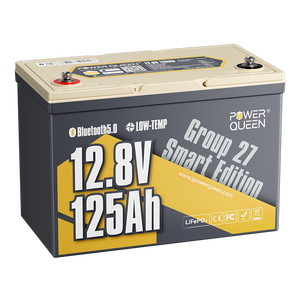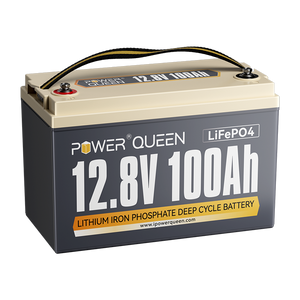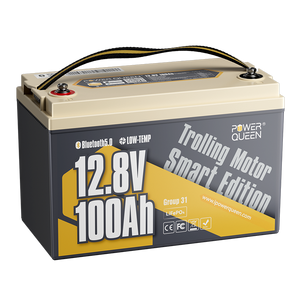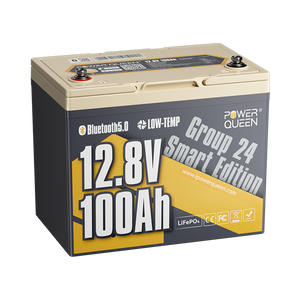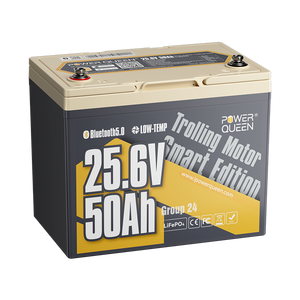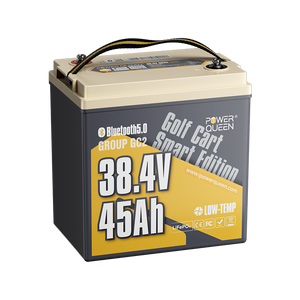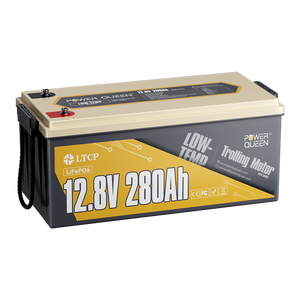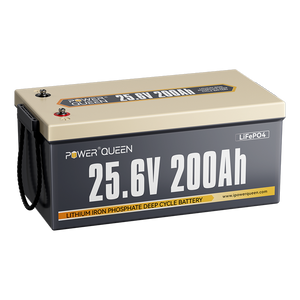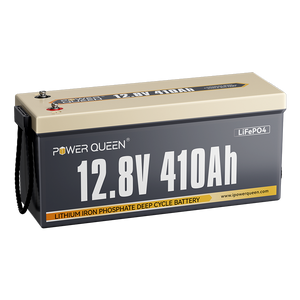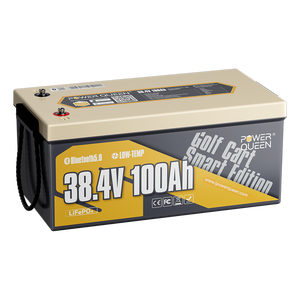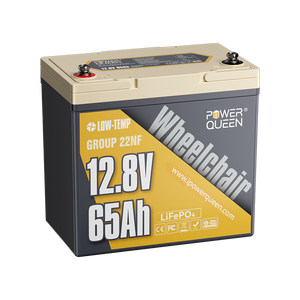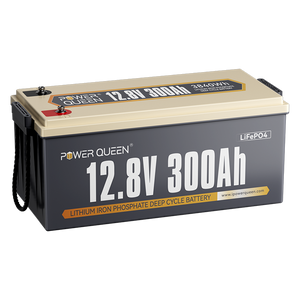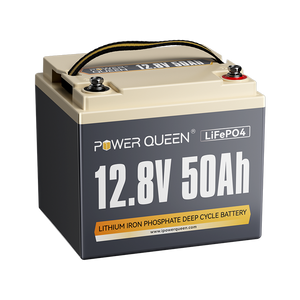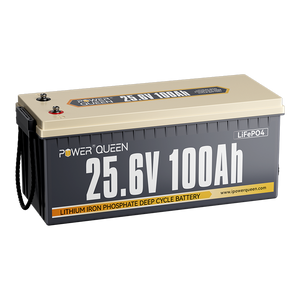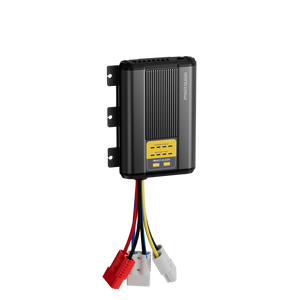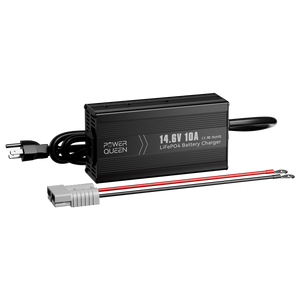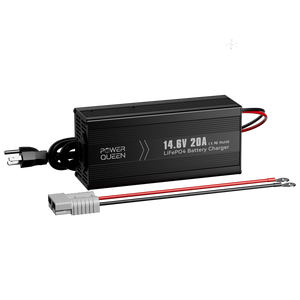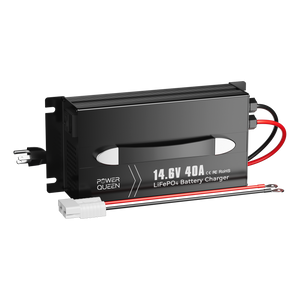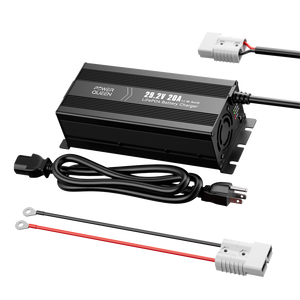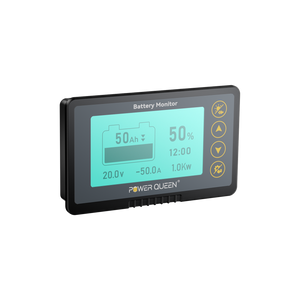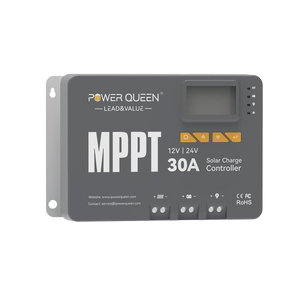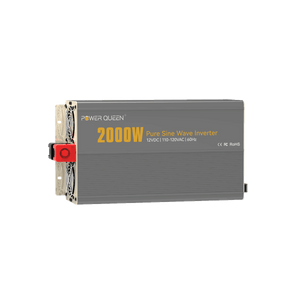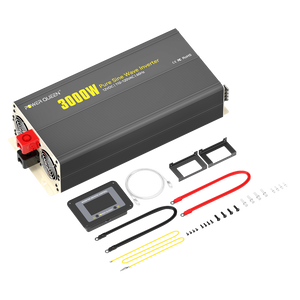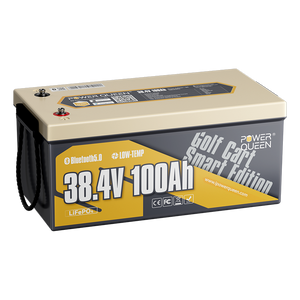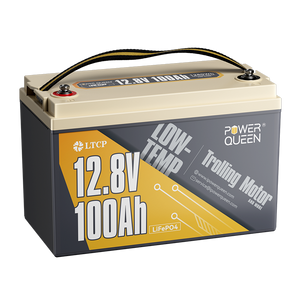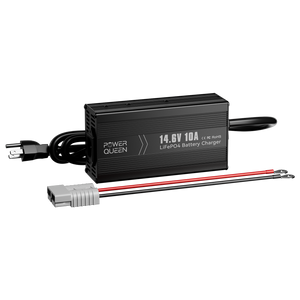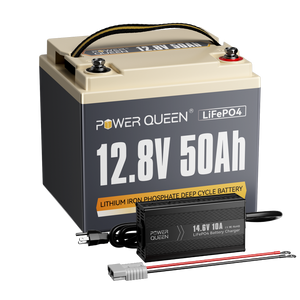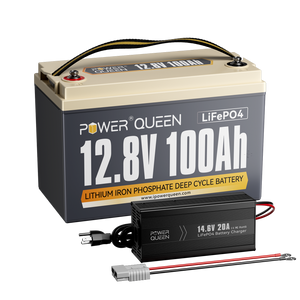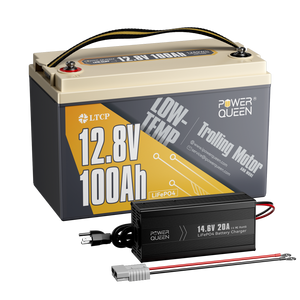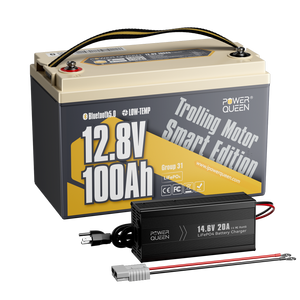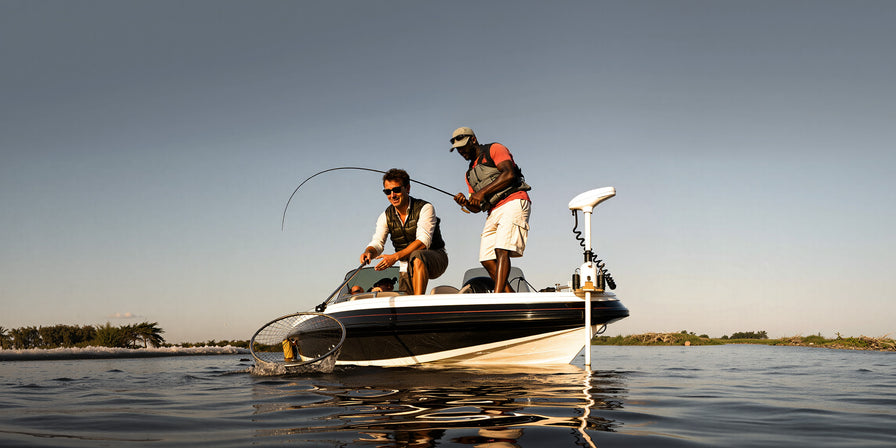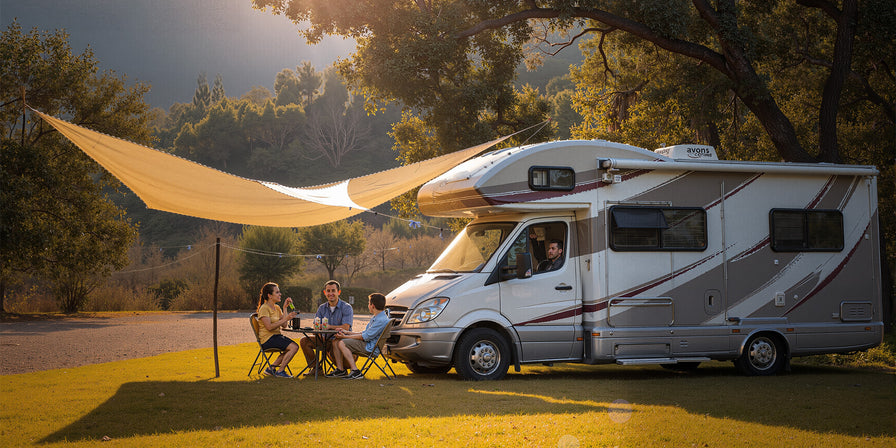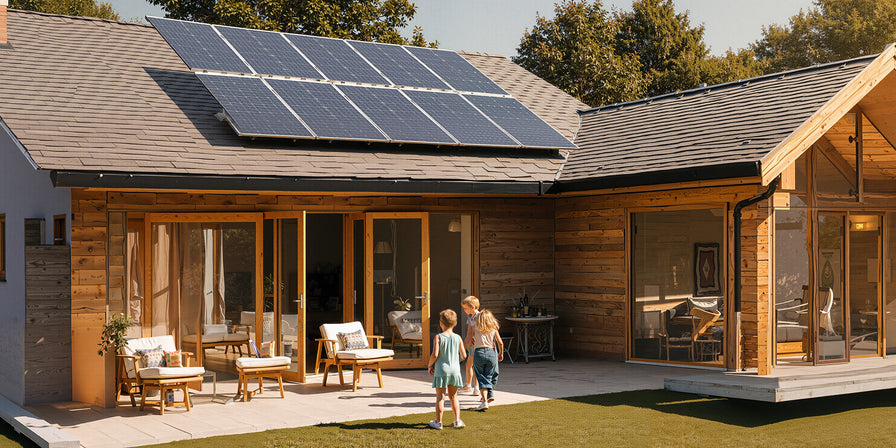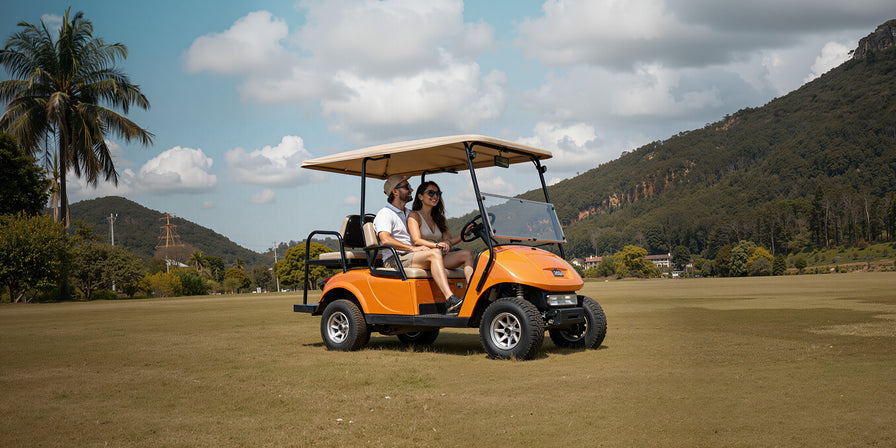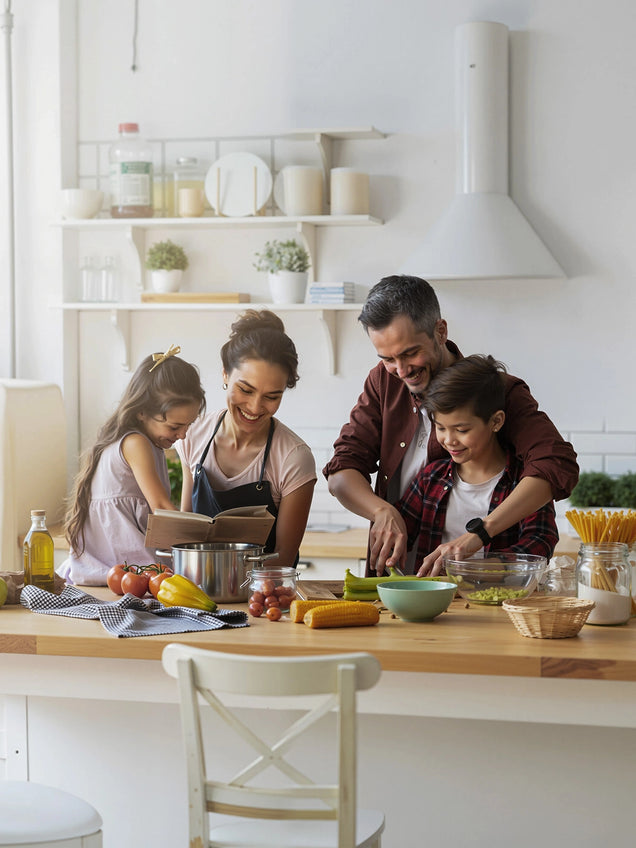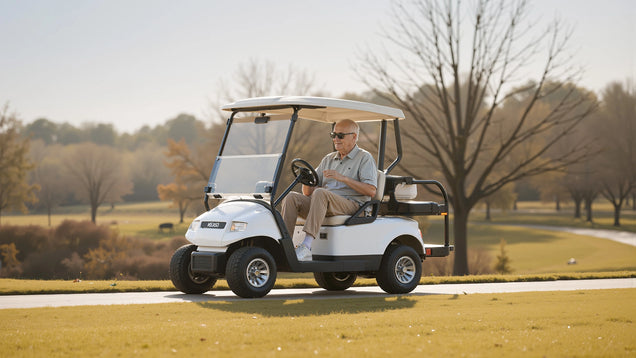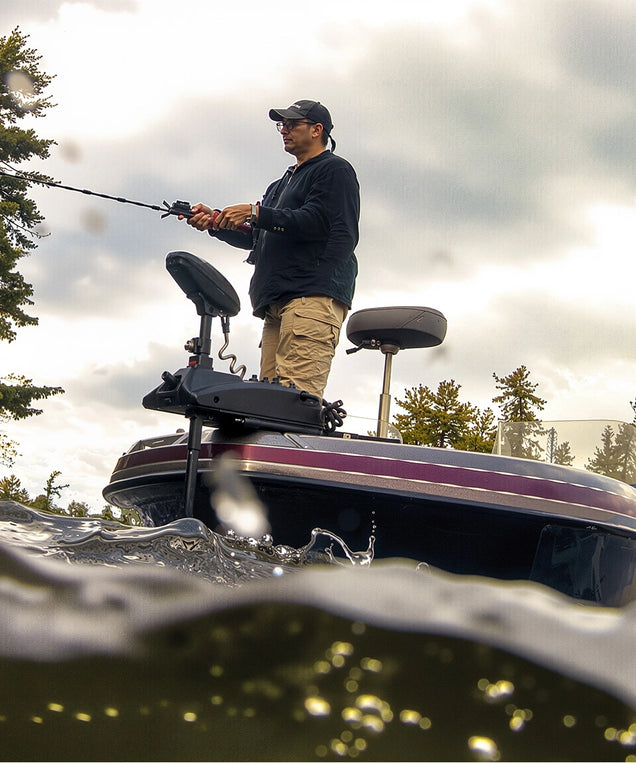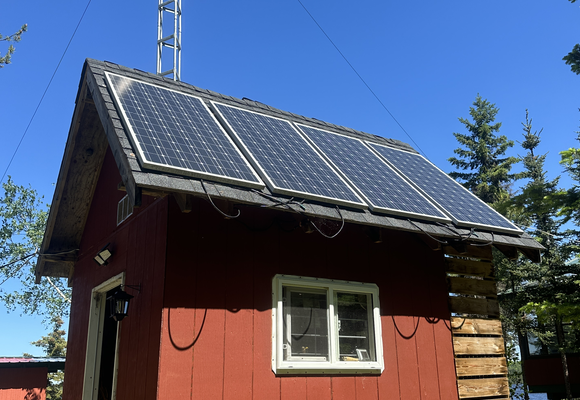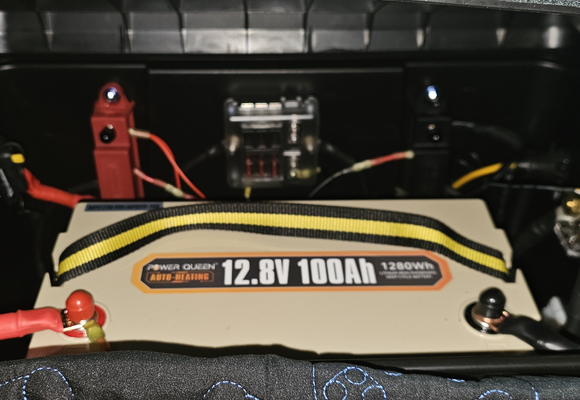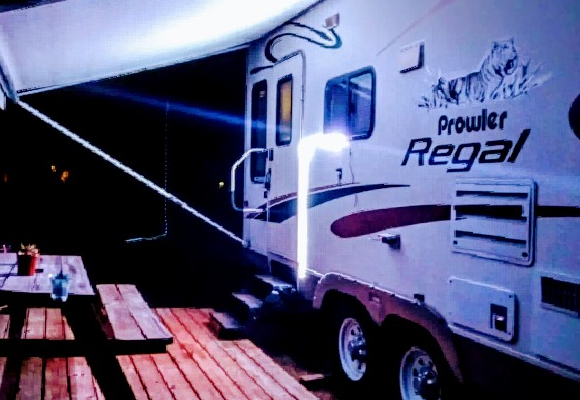Differences On Marine Deep Cycle And Starting Battery
Marine vehicles rely heavily on batteries to power their various accessories and components. Without a reliable battery, the vessel will not be able to anchor or sail through the waters effortlessly. When choosing a battery for your marine vehicle, it's essential to understand the different types available and their differences. Two common types of marine batteries are the marine deep cycle and marine starting batteries. This article aims to highlight the differences between these two types of batteries.

Part 1: Everything about Marine Deep Cycle Battery
A marine deep cycle battery is a type of battery that is specifically designed to deliver a steady amount of power over a long period. It's built to endure deep and recurrent discharges without failing quickly. The battery can withstand being discharged continuously, then recharged slowly over a period, known as a discharge/recharge cycle. This type of battery is usually found in deep cycle applications that require constant and uninterrupted power. Examples of such applications include fishing boats, sailboats, and electric propulsion systems.
Types of Marine Deep Cycle Batteries
The marine deep cycle battery comes in different types, including flooded lead-acid, sealed lead-acid, and lithium-ion. Each type has its pros and cons, depending on the intended use and budget.
1.Flooded lead-acid batteries
Flooded lead-acid batteries are a cost-effective option. Nonetheless, there are several cons associated with this variety of battery. Firstly, they have the lowest C-rating when compared to the other types discussed, indicating that they cannot handle quick charging or discharging without damage.
Furthermore, maintaining them necessitates a more sophisticated charger that can give Equalization charging to guarantee that they last as long as feasible. Failing to maintain them adequately might result in sulfation. These batteries cannot be left in a partially charged state or discharged below 50% of their rated capacity, implying that their useful energy is far less than their capacity.
Moreover, their orientation is crucial, as submerging them could result in the release of hazardous chlorine gas. They require constant floating charging, even when not used, and routine water refilling is essential.
Lastly, proper ventilation in the battery compartment is critical to avoid explosions caused by hydrogen gas released during charging.
2.Sealed lead-acid batteries
Sealed lead-acid batteries, also known as valve-regulated lead-acid batteries, are maintenance-free and last longer than flooded lead acid.
However, there are also some drawbacks to consider.
The primary disadvantage of sealed lead-acid batteries is their limited deep discharge capability compared to flooded lead-acid batteries. They are not designed for deep cycle applications and may be damaged if discharged below a certain point. This means they may not be optimal for long sailing trips or when using trolling motors that require consistent power over long periods.
Another issue is that sealed lead-acid batteries are more expensive than flooded lead-acid batteries and may not fit within the budget constraints of some users. Lithium-ion batteries are more costly than both sealed and flooded lead-acid batteries, but they have the added advantage of higher energy density.
Lastly, Sealed lead-acid batteries can suffer from thermal runaway, which occurs due to excessive heat generation when charging or discharging the battery. To prevent this, proper ventilation is necessary to dissipate heat from the battery housing.
3. Lithium-ion batteries
Lithium-ion batteries are becoming increasingly popular in the deep cycle battery market owing to their many benefits over conventional lead-acid batteries. Li-ion batteries typically offer higher energy densities, longer lifetimes, and lower weight compared to lead-acid batteries. As such, they are ideally suited for marine applications. However, it is important to note that currently, the only type of lithium-ion battery approved for marine use is the lithium iron phosphate (LiFePO4) battery.

Compared to other types of deep cycle battery, LiFePO4 batteries have such advantages:
- Higher Discharge Rate: LiFePO4 batteries can provide a higher discharge rate compared to other battery types. For example, a typical lead-acid battery can only discharge up to 50% without causing significant damage, whereas a LiFePO4 battery can safely discharge up to 80%. This means that LiFePO4 batteries can provide more available capacity for high power consumption devices on a boat.
- Longer Lifespan: LiFePO4 batteries have a longer lifespan compared to traditional lead-acid batteries. While a lead-acid battery typically lasts for 2-3 years, a LiFePO4 battery can last for up to 10 years. This extended lifespan can offset the higher upfront cost of LiFePO4 batteries, making them more cost-effective in the long run.
- Safety: LiFePO4 batteries are safer to use compared to other lithium-ion batteries. This is because they are less prone to overheating or catching fire. While other lithium-ion batteries can be risky in a marine environment, LiFePO4 batteries are more reliable and less hazardous.
- Temperature Range: LiFePO4 batteries can operate in a wider range of temperatures, making them more versatile and reliable in harsh marine environments. They can be used in extreme temperatures ranging from -20°C to 60°C, making them suitable for a variety of applications. Based on these factors, it is evident that LiFePO4 batteries offer superior performance and longer lifespan compared to traditional lead-acid batteries. Although they have a higher upfront cost, their benefits can ultimately offset this initial investment in the long run.
- Lightweight and Portable:When it comes to powering your trolling motor, lithium iron phosphate (LiFePO4) batteries have a clear edge over traditional lead-acid options in terms of weight savings. While a 12V 100Ah lead-acid battery usually weighs in at a bulky 60-70 lbs, Power Queen's 12.8V 100Ah LiFePO4 battery weighs a mere 24.25 lbs. Such a significant reduction in weight can dramatically enhance the performance of your trolling motor, allowing you to maneuver with greater ease and efficiency on the water.



Power Queen offers a vast selection of LiFePO4 batteries specifically tailored to meet the unique requirements of marine vessels. Our Lithium marine batteries feature a compact and lightweight design, ensuring effortless installation, removal, and portability. Moreover, their reduced susceptibility to sulfation and outstanding rapid-charge capability guarantee a consistent and reliable energy supply. For those seeking the ultimate in efficiency and dependability, Power Queen's Lithium-ion battery range reigns supreme.
Part 2: Everthing about Marine Starting Battery
Unlike the deep cycle battery, the marine starting battery is designed to deliver a burst of power to start the marine vehicle's engine quickly. The battery can provide a high amount of current in a short period. Once the engine is running, the marine alternator recharges the battery. Marine starting batteries come in various types, each catering to different engine types.
Types of Marine Starting Batteries
There exist two main variants of marine starting batteries:
Flooded batteries:
The most widespread type of marine starting battery are flooded batteries, otherwise called wet-cell batteries. These employ lead-acid chemistry and require periodic maintenance, which involves adding distilled water intermittently to replenish the water depleted from the cells during the charging process. Typically, flooded batteries come at a more affordable price point than other marine battery kinds.
Absorbed glass mat (AGM) batteries:
AGM batteries require no maintenance and boast a longer service lifespan than flooded batteries. Designed with a glass mat that absorbs and holds the battery's acid electrolyte, there is no need to add water or maintain the electrolyte level. Additionally, AGM batteries are resilient to vibration and can discharge at a higher rate than flooded batteries, making them an optimal option for high-performance boats. Conversely, AGM batteries present a more costly alternative to flooded batteries.
Part 3: Differences Between Marine Deep Cycle and Starting Batteries
Marine deep cycle batteries are designed to provide sustained power to electrical components for an extended period. They are built with thicker, more durable plates that can handle repeated deep discharge cycles without damaging the battery. Deep cycle batteries are commonly used for trolling motors, onboard electronics, and other applications that require a consistent power source.
Marine starting batteries are designed to deliver a high burst of power for a short period to start an engine. They use thin plates that can deliver high current for a short period before discharging quickly. Starting batteries are ideal for powering engines, generators, and other applications that require a high initial surge of power.
Overall, the main difference between marine deep cycle and starting batteries is their construction and intended use. Deep cycle batteries are designed to provide consistent power over a longer period, while starting batteries are built to deliver a high burst of power to start an engine or other high-demand applications.
Part 4: Common Misconceptions about Marine Batteries
There are several misconceptions about marine batteries that may lead to selecting the wrong type of battery. One common misconception is that any type of battery can be used for the marine vessel. While some batteries may work for some time, they may not be durable and may fail sooner than expected. Another misconception is that marine starting batteries can be used interchangeably with deep cycle batteries. However, as highlighted earlier, the intended use is different, thus the battery type. Lastly, selecting the most expensive battery with the highest performance specifications does not always guarantee quality. Other factors such as durability, power needs, and maintenance require consideration.
FAQS about Marine Deep Cycle and Starting Battery
1. Can I use a marine starting battery as a deep cycle battery?
It is not recommended to use a marine starting battery as a deep cycle battery. Starting batteries are designed to discharge quickly and recharge rapidly, while deep cycle batteries are designed to discharge more slowly and recharge more slowly.
2. What is the lifespan of a marine deep cycle battery?
The traditional lead acid deep cycle battery can last aout 3-5 years, while LiFePO4 battery can be used more than 10 years.
3. Can I charge a marine battery while I am out on the water?
Yes, you can charge a marine battery while you are out on the water. Many boats have onboard chargers that can be used to charge the battery while the boat is running. Alternatively, you can use a portable charger or generator to recharge the battery.
Final Thoughts
After an in-depth examination of both battery types, we highly recommend using Lithium Iron Phosphate (LiFePO4) batteries if you require a deep cycle battery for your marine vessel. LiFePO4 batteries are an exceptional choice due to their unparalleled efficiency, extended lifespan, and ability to tolerate deep cycle usage.
At Power Queen, we specialize in providing superior quality LiFePO4 batteries for marine use. Our batteries are engineered to withstand and thrive in the demanding marine environment, featuring a lightweight design, maintenance-free operation, and top-notch performance. Allow us to assist you in meeting your marine power requirements by contacting us today to learn more about our high-quality marine batteries.
